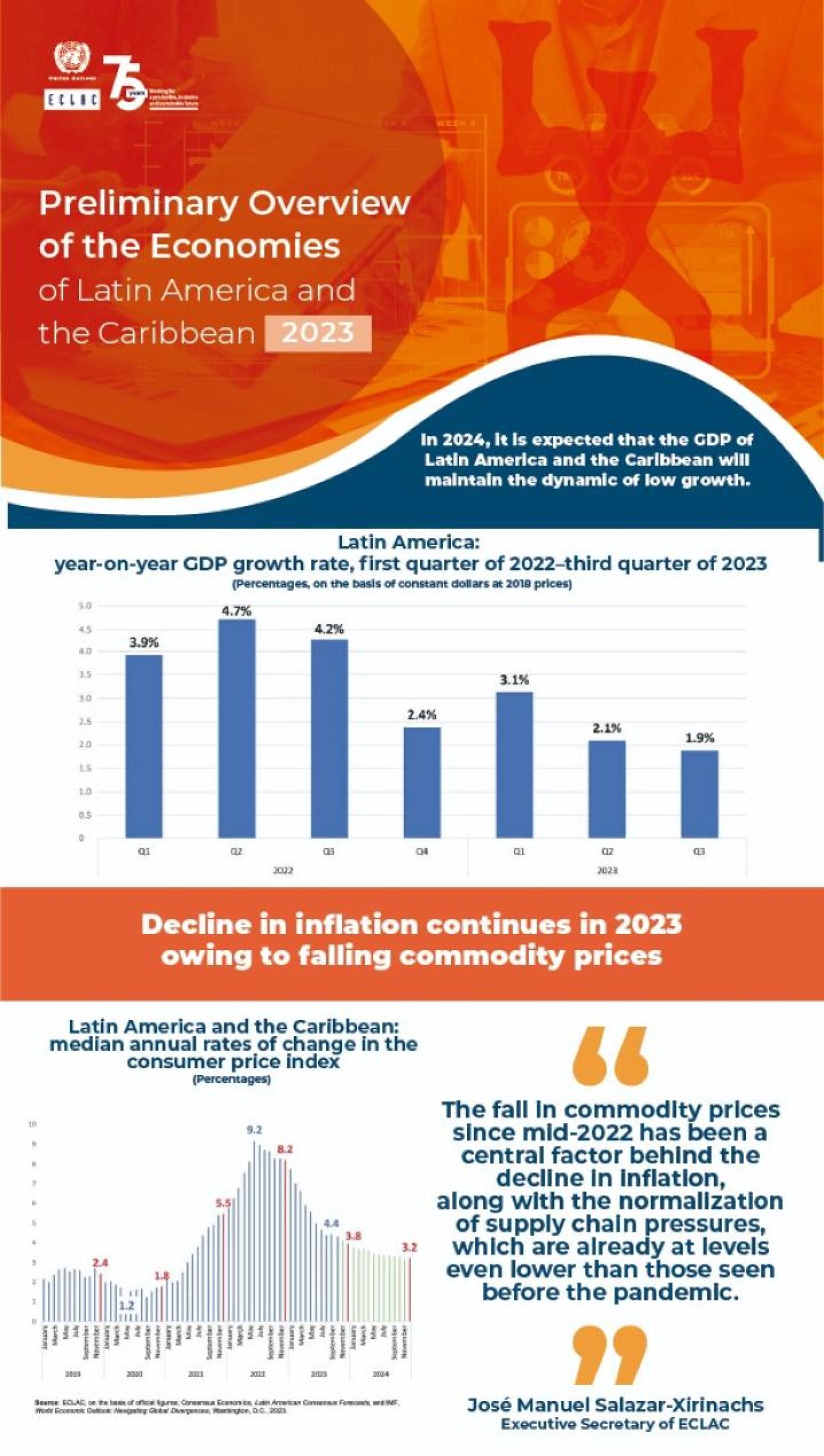Economic activity continues to exhibit a low growth trajectory in Latin America and the Caribbean: ECLAC

The UN regional organisation released today its last economic report for the current year, indicating that the region will grow 2.2% in 2023 and 1.9 in 2024.
The Economic Commission for Latin America and the Caribbean (ECLAC) released today the Preliminary Overview of the Economies of Latin America and the Caribbean 2023, its last annual report this year, in which it indicates that the region will stay on a path of low growth, which means job creation will decelerate and informality and gender gaps will persist, among other effects.
According to the report – which was presented at a press conference led by the United Nations regional commission’s Executive Secretary, José Manuel Salazar-Xirinachs – Latin America and the Caribbean will grow 2.2% on average in 2023 and 1.9% in 2024, which points to a deceleration in regional growth from the levels seen in 2022. Although all the subregions will have lower growth in 2023 than they did in 2022, the report emphasizes the heterogeneity among countries in the region. South America is seen growing by 1.5% (versus 3.8% in 2022); the group made up of Central America and Mexico by 3.5% (4.1% in 2022); and the Caribbean (without including Guyana) is forecast to grow 3.4% (6.4% in 2022).
In 2024, it is expected that the region will maintain this dynamic of low growth and all the subregions will grow less than in 2023: South America is seen expanding by 1.4%; Central America and Mexico by 2.7%; and the Caribbean by 2.6% (without including Guyana).
These projections reflect, in part, low dynamism in economic growth and global trade, which translates into a limited impetus from the global economy. Although inflation has declined, the interest rates of the main developed economies have not, which means that financing costs have remained at high levels throughout the year and they are expected to stay that way in coming years.
Furthermore, this low growth is also attributable to the limited domestic space for fiscal and monetary policy faced by the region’s countries. In this regard, it is emphasized that while public debt levels have declined, they remain high, and this – coupled with the increase in financing costs – restricts fiscal space. In the monetary arena, inflation continues to decline in the region, but monetary policy still has a restrictive bias, due to the effects that rate cuts could have on capital flows and the exchange rate, given that high interest rates are still in effect in developed countries.
In 2023, it is forecast that average inflation in the region will finish the year at 3.8%, far below the 8.2% recorded in 2022. In 2024, that decline will continue, with the average regional inflation rate estimated at 3.2%, according to the report.
ECLAC estimates that the number of employed persons will have grown 1.4% in 2023, which points to a 4 percentage point drop from the 5.4% recorded in 2022. This lower rate of job creation is seen continuing in 2024, when the number of employed persons is projected to grow by 1.0%.
To escape the low-growth trap, “it is necessary to escalate productive development policies with a focus on strategic, dynamic sectors, carry forward policies to promote public and private investment, and adjust the financing framework to enhance resource mobilization,” José Manuel Salazar-Xirinachs emphasized.
In its Preliminary Overview 2023, ECLAC calls for complementing productive development policies with macro and financial policies that would allow for proper management of the financial and foreign-exchange risks faced by the region, and would stimulate domestic resource mobilization to expand fiscal space and increase investment and productivity. Likewise, policies are needed that would enable greater inclusion and reduction of the significant inequalities that characterize the region, among them gender inequalities. Furthermore, ECLAC indicates that reforms to the international financial and tax architecture are needed to accompany the region’s countries in achieving the Sustainable Development Goals, by directing resource mobilization towards the region.


